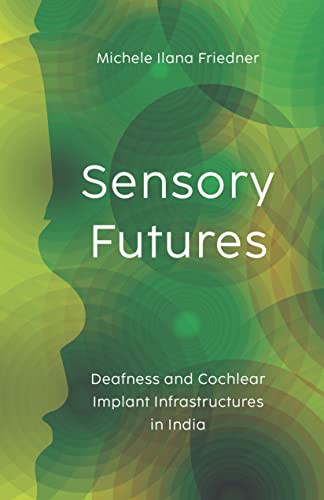Sensory Futures: Deafness and Cochlear Implant Infrastructures in India
amazon.com
Sensory Futures: Deafness and Cochlear Implant Infrastructures in India

Communication can escape categorization.
mothers in particular are expected to become “like cricket commentators” and talk nonstop with their deaf children.
I also heard mothers at the training program based at the director’s institute repeat the same words, emphasizing the patience that mothers have for their children and highlighting mothers’ unique abilities to work hard to teach their children so that “magic would happen” and their children would start listening and talking.
The idea that no single resource is a panacea is important to consider in light of the value focused on listening and spoken language.
communication—and relationality—can come in different forms, in contrast to what professionals often tell mothers about the primacy of listening and spoken language.
By “anonymous love,” I mean that disability has turned into an exceptional—even transcendent—category to be showered with affection and benevolence under the current government.
As children are implanted, mainstreamed, and discouraged from using gesture and sign language, their opportunities to interact with ISL speakers and other deaf people in general contract.
multisensory, multimodal, and engaged in multipersonal interactions.
they hope that their child’s hearing age will eventually “catch up” with the child’s chronological age—an achievement that depends on the mothers’ “hard work” (in Hindi, mehanat).